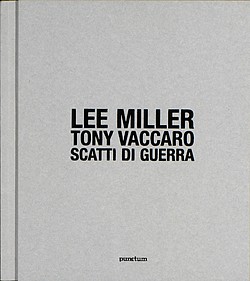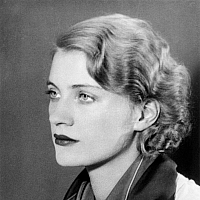
Lee Miller arrived in Normandy twenty days after D-Day as a correspondent for the American army, accredited after being turned down curtly by the British High Command. Over the following nine months she followed the American forces and took part, often against the orders of the military authorities, in some of the most important events of the allied offensive on the continent: the siege of Saint Malo; the liberation of Paris (where she remained for some weeks in search of former friends: Picasso, Colette, Eluard, Aragon and Cocteau); the Luxembourg and Alsace campaigns; the entry into Germany and the last bloody battles on German territory; the taking of Munich where she photographed Hitler's completely abandoned house and his burned down alpine fortress in Berchtesgaden; the liberation of Buchenwald and Dachau. From her surrealist past her war photography inherited special attention to "ordinary people": soldiers, nurses, civilians, the dead and wounded. And an extraordinary technique, reinforced by Lee Miller's avant-garde equipment which she did not give up even under the tough conditions at the front. Clarity and versatility of the image characterise the landscapes transformed into wildernesses by the fighting, the cities razed by bombardments; battles and death scenes; all in a continual oscillation between immediacy and professional detachment which makes Lee Miller a unique witness of the horrors of war.
Tony Vaccaro landed at Omaha Beach on 6th June 1944 with a gun in one hand and a camera in the other. In his role of soldier-photographer he took part in and documented the allied advance through France, Luxembourg, Belgium and Germany. From liberated Zerbst he tried without success to reach Berlin in order to photograph the entry of the American troops. He got there after the surrender and, as correspondent for the US Army newspaper The Stars and Stripes, reported the first months of post-war Germany. The 8.000 photos Tony Vaccaro shot in the course of mobilization - under extreme conditions wrought with continual and tough obstacles - tell from the inside the difficulties of life at the front: daily and close encounters with death; violence perpetrated on the population; devastation of the landscape and all forms of civilised coexistence. But also solidarity among the soldiers and their living conditions, with a realism and an absence of rhetoric that make the "combatant photographer's" images one of the most authoritative documents of the wounds inflicted on the 20th century by the second world war.
Lee Miller and Tony Vaccaro, from the Normandy landings to the Liberation: the exhibition, curated by Marco Delogu and Umberto Gentiloni Silveri, has been set up in the first floor rooms of the Scuderie del Quirinale. To introduce the visitor to the greatest offensive campaign in contemporary military history the first room presents a reconstruction of the Normandy landings: aerial photographs taken by the allied aviation reconnaissance departments and supplied by the United States National Archives and Records Administration (NARA) and the British National Archives; original maps of the landing beaches; photographs taken from the land, in colour, of disembarkation and the first battles on French soil. The next room contains a selection, in parallel and in chronological order, from the photographs of Lee Miller and Tony Vaccaro, preceded by a precise reconstruction of the two reporters' itineraries from Normandy to Germany. About a hundred images of the most representative moments of their war experience and the difficult early phases in post-war Europe


